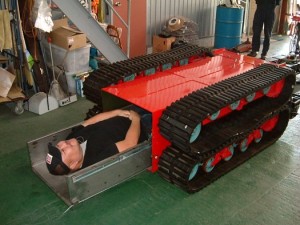The Egyptian pyramids have been a cause of a lot of mystery and wonder. It has long been a riddle how the ancient Egyptians managed to use huge stones for such grand architecture. A new scientific theory finally attempts to explain this.
The scientific explanation is pretty much the same that was offered in the case of China’s Forbidden City. Findings in friction physics revealed late last year that it was very probable that the workers sprinkled water on top of ice to sledge 100-ton stones to the site of the ancient Chinese city.
In the case of the pyramids, scientists believe that the ancient Egyptians sprinkled water on sand to create a sledge-like path to move huge rocks. Stones weighing as much as 2.5-tonnes and gigantic statues carved out of rock had to be dragged across the desert over great distances in order to prop up these structures.
Normally, when immense weight is carried over the sand, the vehicle gradually digs into the sand which then piles up on its front. Simple dragging across the desert would’ve been impossible. But when the sand is dampened and becomes moist and stiff, it remains in shape and dragging the stones becomes possible. Scientists simulated this entire scenario in a lab experiment to confirm the results.
The results, and the explanation of the theory, are encapsulated in these words from an article, “Experiments revealed that the required pulling force decreased proportional to the stiffness of the sand. Capillary bridges arise when water is added to the sand. These are small water droplets that bind the sand grains together. In the presence of the correct quantity of water, wet desert sand is about twice as stiff as dry sand. A sledge glides far more easily over firm desert sand simply because the sand does not pile up in front of the sledge as it does in the case of dry sand.”
Many analysts hope that these new findings regarding friction physics and the behavior of sand may help scientists develop better transportation modes for today’s world.
Source: Phys.org
Courtesy: GMA News
[ttjad keyword=”android-phone”]





so much for the possibility of dragging big arse rocks over wet sand. But how about lifting them hundreds of meters into the air?
I guess only the smaller part of the puzzle can be considered “solved” by the materialists among scientists.
Where / How did they find / obtain the massive amounts of H20 required to carry out this process?